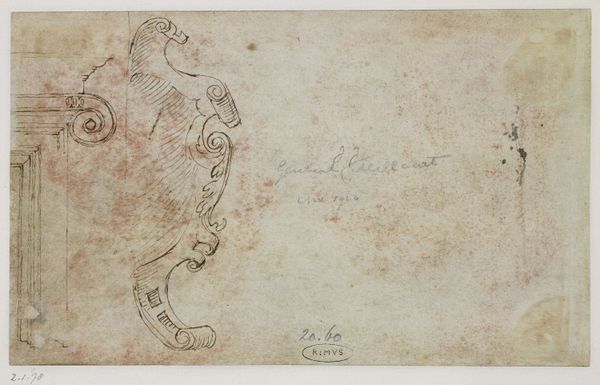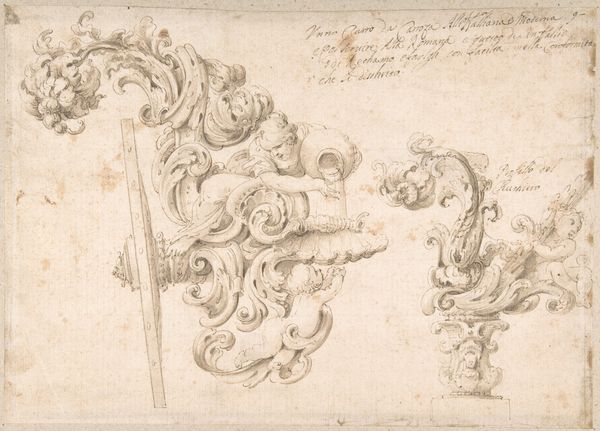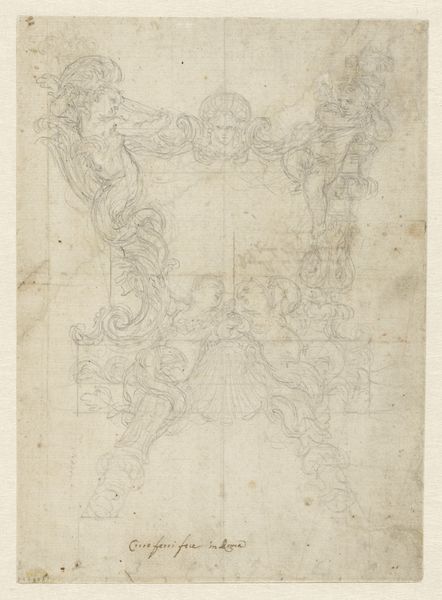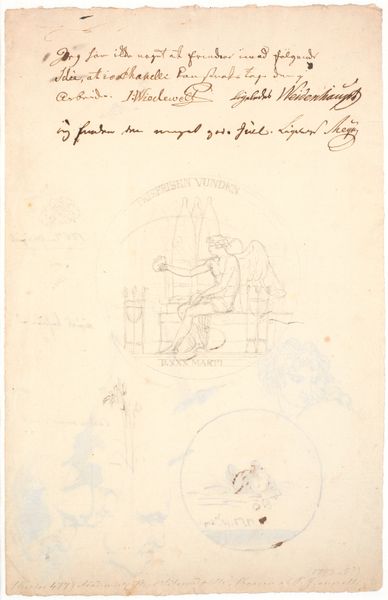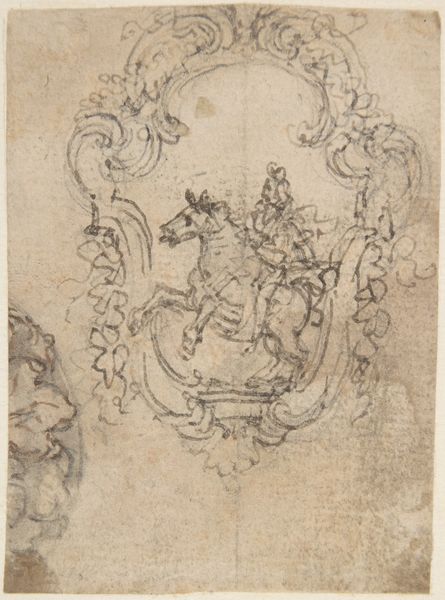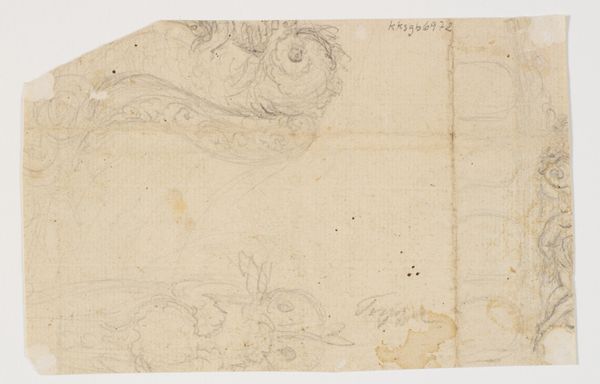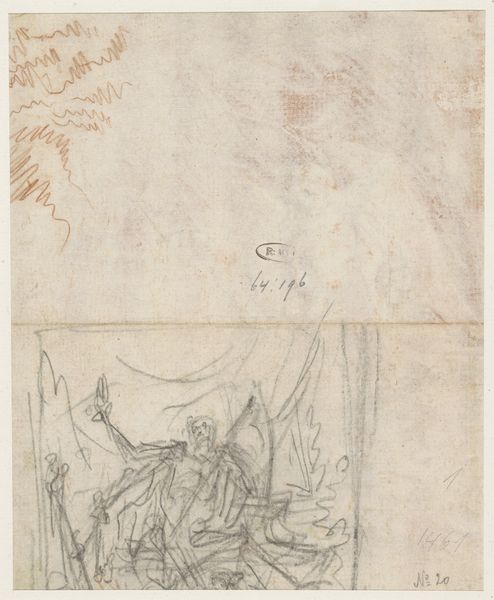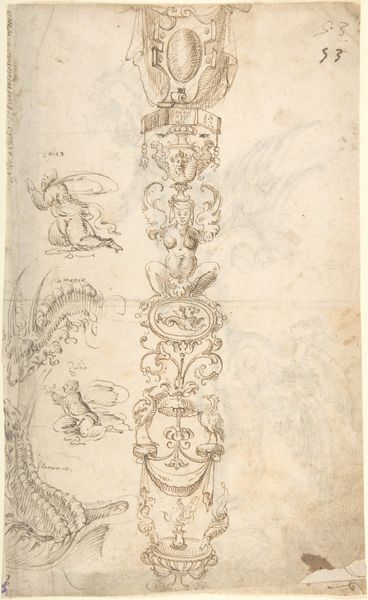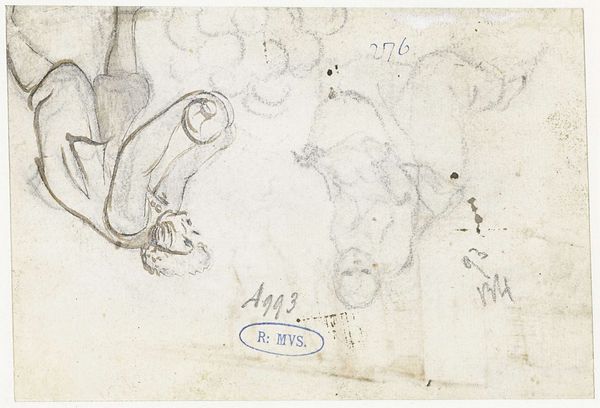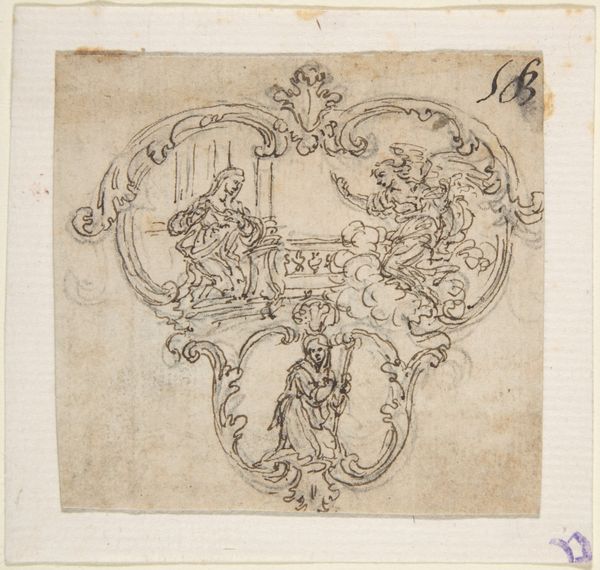
drawing, pencil
#
drawing
#
baroque
#
figuration
#
pencil
Dimensions: Sheet: 5 1/8 × 7 3/8 in. (13 × 18.7 cm)
Copyright: Public Domain
Curator: Welcome. We’re standing before Augustin Pajou’s “Rocky Landscape with Figures,” a pencil drawing dating from approximately 1747 to 1757. It’s currently held in the collection of the Metropolitan Museum of Art. Editor: My initial impression is one of subdued anticipation. The delicacy of the pencil work creates a sense of quiet observation, like peering into a dreamscape where monumental forms hover. There is an air of sketched fantasy in its composition, suggesting at the same time solidity and fleeting impression. Curator: Indeed, that delicate, almost ethereal quality is achieved through Pajou’s mastery of line. Notice how the artist uses varied line weights to suggest depth and texture, creating a sense of mass without resorting to heavy shading. Look how these circular shapes echo each other. It lends an uncanny structure. Editor: Agreed. But I'm wondering about the role these 'figures' are supposed to play, particularly in relation to their representation against the grand architecture suggested here. Their scale is such that their very humanity feels challenged by the unyielding stone and ornamented carvings—suggesting that we might consider their subjugated position within larger structures of power, and what would appear as signs of their enslavement within systems of forced servitude. Curator: I see your reading of power dynamics. What also stands out is Pajou’s skill at capturing light. The pencil strokes mimic the way light might play across a rough stone surface, creating subtle highlights and shadows that animate the entire scene. Even incomplete, they radiate as finished structures! Editor: Perhaps there are additional layers of contextual factors. It reminds me, that with regards to figuration, landscape during the baroque era was often used symbolically, or to invoke larger questions related to social morality. Is Pajou inviting us, during a period of aristocratic flourish, to reflect on labor, its effects, and questions of its ethical distribution within emerging social regimes of capitalist industry? Curator: I’m swayed by your understanding of the potential subtexts, particularly relating to social morality, and it adds a new dimension to my viewing. Editor: Likewise. It also allows me to appreciate even more how artistic brilliance isn’t confined to completed works, or the illusion of, but flourishes in explorations that, when considered thoughtfully, lead to deep engagements and dialogues.
Comments
No comments
Be the first to comment and join the conversation on the ultimate creative platform.

